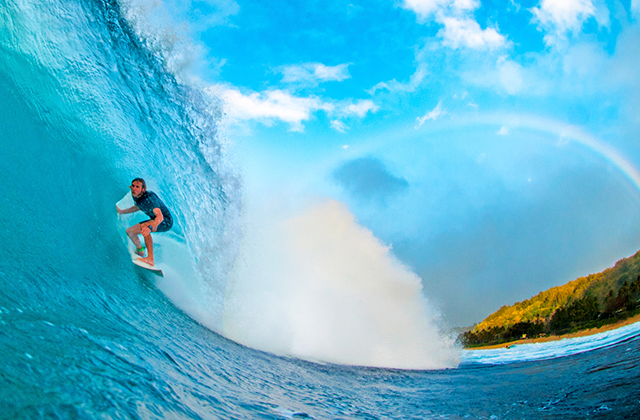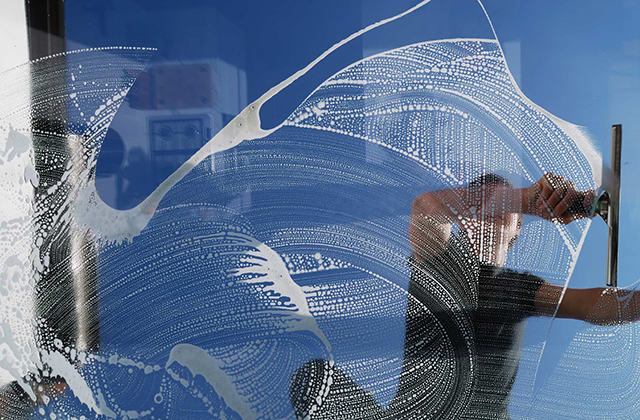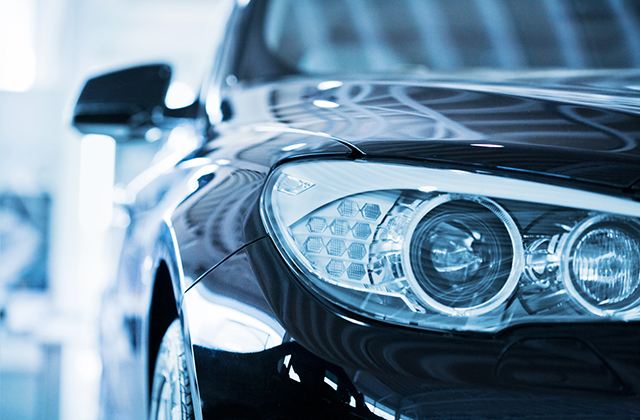Car polisher is a mildly abrasive liquid designed to improve the smoothness and shine of vehicle paint. We have all done it…bought a car because it looked amazing in the showroom and thought it would look fantastic on our driveway. Carnauba wax has various applications and uses and these include food, cosmetics, automobile and furniture wax, molds for semiconductors devices, and as coating for dental floss.
We pictured how jealous our neighbors would be when we arrived home to show off our new wheels!
But the harsh reality is that after two weeks of posing the car has lost its entire original shiny look under the grime and dirt of everyday motoring.
Imagine then that you have spent a Kings ransom on a supercar, a car that mere mortals could only dream of and by the time you shown all of your friends, you (or your chauffeur) need to clean it.
So, what car cleaning products do you use to make the paintwork look like new again without causing the ubiquitous swirl marks and fading commonly associated with traditional car washing?
Because Supercars are special cars, special care must be taken to keep them clean. The trick is not to be scared of cleaning your supercar.
Paintwork: The first step is a routine washing to remove dust, road grime, and other contaminants. The second is a more thorough cleaning process to prepare your car’s paint for a protective coating (such as wax).
Supercars should always be washed by hand – never by an automated machine like you’d find at a petrol station. Taking the time to wash your paintwork correctly will pay off with fewer scratches and swirl marks in your paint. When washing, you’ll need a few simple items: a hose with an adjustable spray nozzle, a wash mitt, a bucket, and some soap. Sheepskin wash mitts are a good choice for cleaning your supercar, but don’t settle for synthetic sheepskin. Natural sheepskin lasts longer, holds more water, and is safer to use on your paint. Be sure that your wash mitt has been thoroughly cleaned since the last time you used it. Pine needles, rocks, sand, and other debris that may be tangled in your wash mitt will scratch your paint.
“The soap you choose when washing your car is important. Don’t use household dish soap or other abrasive cleaners. Use a specialty car cleaning product which is designed to remove dirt and road grime without damaging your paint” says Jonathan Copping of specialty car cleaning supplier Croftgate “Make sure your bucket is clean, put some soap in, and then squirt your hose in the bucket to create some suds.”
“If a shady location is available, it’s best to wash your car here. This will help slow the drying process and allow you to manually dry your car to eliminate water spots,” he continued.
“Before you start washing, be sure you give your car a light rinse with the spray nozzle. Use either a mist setting or a gentle shower setting, but don’t squirt your paint with a spray nozzle at full strength. This light rinsing will remove any loose dust and dirt, and will lessen your chances of scratching your paint with the wash mitt.”
“Get your mitt wet and soapy, and then wash your car, starting at the top. This will save time, as you won’t have to rinse running soap from areas that you’ve already cleaned, and it will help keep your water and wash mitt cleaner, since cars tend to be dirtier on bottom and near the wheels.”
“Don’t worry about cleaning the wheels quite yet. Wash all your painted surfaces first. Work on one small section at a time and then rinse with a gentle stream of water. Continue until all painted surfaces have been washed and rinsed.”
After you wash your car, you should dry it by hand to make sure that you don’t get dried water spots in your paint. If you like using towels, make sure that they are 100% cotton (including the stitching around the edges) to reduce the chance of swirl marks. The best and safest option for drying your paint however, is a chamois. If you are a chamois user, keep a few terry cloth towels handy to dry dirty areas like door jams, wheel arches, and other areas that might stain your chamois.
To use a chamois, simply wet it down, ring it out, and wipe it gently across your painted surfaces. It will act like a sponge and suck up water. Once it’s full of water, wring it out, and keep going until your paint is dry.
Wheels: Supercar wheels come in a variety of shapes and finishes. Some wheels are painted and clear coated, just like your car. These should be cleaned and treated just like rest of the paint on your car. Other wheel types include clear coated aluminum, anodized; chrome polished non-clear coated aluminum, and magnesium.
Wheels usually get dirty more quickly than other areas of your car due to brake dust. When choosing a cleaner, stay away from the “spray on, hose off” products available in traditional car care stores. They are far too harsh for use with the most expensive wheels.
For chrome wheels, use a non-abrasive chrome polish specially designed for that purpose. For non-chrome wheels, use a non-abrasive wheel cleaner. Use a sponge or wash mitt along with your cleaning product to remove all brake dust and grime. For wheels with intricate patterns, try using a boar’s hair brush to reach all the nooks and crannies that are hiding the dirt. Dry your wheels with a soft terry cloth towel when you’re done. Croftgate has recently seen a rare approval from Alcan Europe, one of the worlds leading alloy manufacturers for the safety of its alloy wheel cleaning product.
Tires: There are almost as many varieties of tire dressing available on the market as there are tires. Which product you use depends greatly on how you want your tires to look when they’re finished. You may like the “wet” look or you may want to restore your tires’ original black look, but without excessive shine.
Regardless of which tyre dressing product you choose, you must be careful that you apply the dressing only to the outer edge of the tyre. If tyre dressing drips, runs, or is accidentally sprayed on the tread of the tyre, your tyres could become slippery and create a dangerous situation for the driver.
Glass: Keeping your windshield and windows clean is an essential element of Ferrari detailing. A number of cleaning products are available, but choose a product that has no dyes, perfumes, or any other chemicals that lead to hazing on your window surfaces. Make sure it is safe to use on window tinting film, and prevents fogging when used on the inside of your windows. Use lint-free towels, microfibre or newspaper when wiping off glass cleaning products to prevent streaking.
Once your windshield is clean, try using a window polish to make rain roll off your windshield as you drive. Apply a liberal amount with a circular, overlapping motion. Allow it to dry to a haze, and then polish clear by sprinkling a small amount of water on your windshield and then wiping with a clean towel.
Protective Coats: In order to keep your paint protected, it is essential to apply some sort of protective coating periodically, such as wax or polymer protectant finish. How often you apply the paint protection depends largely on which product you choose, how often you drive your car, and the weather conditions in your area. A general rule, however, is that your car’s paint should be protected at least every 6 months.
Before applying a protective coating, however, you must prepare your paint’s surface. Surface preparation starts with a good washing following the guidelines above, but further preparation will enhance the results of your protective coating. Surface preparation removes any old wax, thoroughly cleans your paint, and helps your protective coating adhere to your paint’s surface when you apply it in the next step.
If you choose to wax your supercar, make sure you use a very high grade Carnauba wax. Waxes can be applied by hand, or by machine. Machine application helps make sure your wax is applied evenly, but can damage your paint if the wrong type of machine is used. If you plan on using a machine, make sure it’s a random orbital buffer. If you plan on applying your wax by hand, then make sure you’ve got plenty of time and patience to do the job right.
Proper waxing entails applying the wax evenly, allowing time for the wax to create a haze over your paint’s surface, and then buffing the haze to a brilliant shiny finish. Use a high-quality sponge applicator to apply the wax, and use lint-free 100% cotton polishing cloths to remove it. Follow the instructions that come with your wax products to ensure the best results.
While waxing can provide good results and adequate protection for your supercars paint, there are a lot of problems with wax. Wax removal must be timed properly so that you don’t have a lot of trouble removing the haze left from the dried wax. Wax build-up is a consideration, especially since waxes will turn yellow over time. It requires a lot of work to get the wax out of emblems, from around lights, off of rubber, and other difficult locations on your car. And a coat of wax doesn’t last very long under normal driving conditions. In general, waxes are good protection, and we’ve been conditioned to love the way water beads up on a fresh coat of wax. A fresh wax job also has a nice sheen when sunlight hits it.
But wax technology hasn’t changed significantly over the years, while paint formulation technology has. For this reason, many supercar owners are switching to a polymer-based protectant finish as a substitute for wax. A polymer-based product can bond to a clean paint surface – waxes can’t. Applying a polymer-based product is more like adding clearcoat to your car. Build up isn’t a problem, since multiple layers of finish will actually protect your paint even better and make your finish more brilliant.
This can be applied by wiping a thin layer of the polish in a non-circular fashion over the entire painted surface of your car. For the first application, allow the polish to cure at least overnight. You could theoretically allow the polish to dry for months, and it would still wipe off easily with no adverse affects. As the polish cures, it turns into a white haze. After it is fully cured, it can be wiped off quickly and easily with a soft cotton polishing cloth. You should re-apply the polish every 6-8 months, and each application creates stronger protection for your car’s paint. Follow-up applications only require 15-20 minutes curing time.
Engines: Just because your engine bay isn’t in plain view doesn’t mean you should let it stay dirty. Grease, oil, dirt, dust, grime, and other contaminants can make a beautiful engine look dull and uncared for.
Before using any liquid cleaners in your engine bay, however, make sure that electrical contacts are covered. Spray a degreasing agent onto your engine and allow it to work for 5-10 minutes. For stubborn spots, use a detail brush to scrub away the dirt. Rinse away the degreasing agent and allow to air dry. Do not use any flammable dressings on hoses, wires, or any other surfaces in your engine bay, as they could cause a fire if exposed to high temperatures.
The only remaining part of your detailing project is the black trim that adorns your supercar. Most tire dressings are also good choices to dress black rubber, plastic, and vinyl trim on your vehicle.
To try Croftgates supercar cleaning products, click here to go to their website http://www.croftgate.com or contact them directly on 0044 (0)1200 420 198
David Croftgate – Is an expert on Car cleaning products [http://www.croftgate.co.uk] and Croftgate was recently awarded The Royal Warrant for supplying The Royal Family due to the quality of the products.
Article Source: http://EzineArticles.com/expert/David_Croftgate/215890
Article Source: http://EzineArticles.com/1207388


